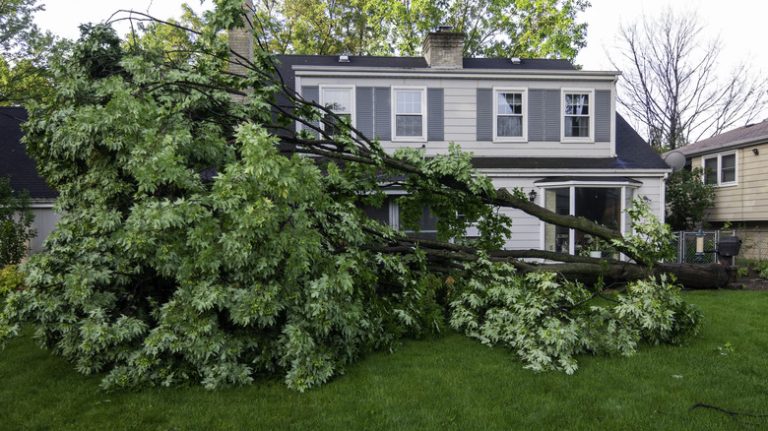Camellias are popular flowering plants that can bring beauty and color to any garden or landscape. However, like any other plant, they are susceptible to a range of problems that can affect their health and flowering. These problems can be caused by a variety of factors, including pest infestations, fungal and bacterial infections, nutrient deficiencies, wilts and other diseases.
One of the most common problems that camellias face is insect infestation. Pests such as aphids, weevils, and mites can cause damage to the leaves and flowers of the plant. These pests can be controlled through the use of appropriate gardening techniques and the use of organic solutions.
Inappropriate watering and excessive sunlight can also cause health problems for camellias. For example, over-watering can lead to root rot and leaf wilting, while too much sunlight can cause leaf yellowing and scorching. It is important to provide camellias with the right amount of water and sunlight for optimal growth and health.
Fungal infections can also pose a serious threat to camellias. Diseases such as canker, flower blight, and leaf spot can cause damage to the plant and affect its ability to produce flowers. To control these diseases, it is important to maintain good air circulation around the plant, remove infected leaves and flowers, and use appropriate fungal sprays.
To ensure the health and vitality of your camellias, it is important to provide them with the right conditions for growth. This includes planting them in well-drained soils, using mulch to retain moisture and control weeds, and providing them with the necessary nutrients for proper absorption. Regular pruning and maintenance can also help to prevent and control common camellia problems.
Camellia Problems
Camellias are beautiful flowering plants that are particularly susceptible to a variety of problems. These problems can include drought, weevils, bright sunlight, sooty mold, frost, yellowing leaves, nutrient deficiency, and more.
Drought is a serious problem for camellias as they require moist soil to thrive. If not properly watered, the plants can suffer from wilting, yellowing leaves, and poor flowering.
Weevils can also infest camellias, causing damage to the buds and flowers. These pests can be controlled using organic methods or insecticides recommended by the department of agriculture.
Bright sunlight can cause the leaves of camellias to develop yellow spots, a condition known as chlorosis. This can be prevented by planting camellias in areas with partial shade or using shade cloth to filter sunlight.
Another common problem for camellias is sooty mold, which is a black, powdery substance that appears on the leaves and twigs. This mold is caused by insects such as aphids or whiteflies and can be controlled by addressing the insect infestations.
Camellias are also prone to frost damage, especially the early flowering varieties. This can result in the death of buds and flowers. To protect camellias from frost, cover the plants with a cloth or move them to a sheltered location.
Camellias with variegated leaves are more susceptible to nutrient deficiencies, such as iron chlorosis. This can be addressed by using iron supplements or planting in nutrient-rich soil.
Improper planting and watering can cause camellias to develop canker, which is a fungal disease that affects the twigs and branches. To prevent canker, ensure that camellias are planted at the appropriate depth and watered from the base.
Camellias planted in containers can also face absorption problems, as the roots may not be able to take in enough water and nutrients. To address this issue, repot the plants into larger containers or plant them directly in the ground.
In summary, camellias can face a variety of problems, including pests, diseases, nutrient deficiencies, and environmental factors. It is important to address these issues promptly in order to ensure the health and beauty of the plants.
Camellia diseases
Camellias can be affected by a variety of diseases that can cause serious damage to the plant. It is important to properly identify and address these diseases early on to prevent further spread and potential death of the plant.
One common disease that camellias can experience is nutrient deficiencies. This can lead to yellowing leaves, poor flower production, and overall weak growth. It is important to provide the necessary nutrients by using a balanced fertilizer or organic mulch.
Fungal diseases, such as Pythium, can also be a problem for camellias. These fungi can cause cankers, yellowing leaves, and even death of the plant. To prevent fungal diseases, it is important to avoid excessive watering and keep the soil moist but not waterlogged.
Another common disease that camellias can suffer from is Camellia Flower Blight. This disease is characterized by brown spots on the buds and twigs, which can prevent the flowers from opening properly. To control this disease, it is important to remove any infected buds or twigs and to prune the plant to improve air circulation.
Sooty mold is another problem that can infest camellia leaves. This mold appears as a black, powdery substance and can be caused by insect infestations, particularly aphids. To control sooty mold, it is important to control the insect population and provide adequate sunlight to the plant.
Camellias are also susceptible to frost damage, particularly in colder climates. Frost can cause the leaves to turn brown and eventually fall off. To protect camellias from frost, it is important to provide adequate shelter or cover the plant during periods of frost.
Camellias can also suffer from various leaf spot diseases, which are caused by different fungi. These diseases can cause black or brown spots on the leaves and can lead to defoliation if left untreated. To control leaf spot diseases, it is important to keep the foliage dry and remove any infected leaves.
Camellias can also experience chlorosis, which is characterized by yellowing leaves with green veins. This is often caused by nutrient deficiencies or poor soil conditions. To address chlorosis, it is important to provide the necessary nutrients and improve the soil quality.
In conclusion, camellias can be affected by various diseases that can cause serious damage to the plant. It is important to properly identify and address these diseases early on to prevent further spread and potential death of the plant. Regular monitoring, proper watering, adequate sunlight, and nutrient management are key in maintaining healthy camellias.
| Sources: | – Bugwood.org | – UF/IFAS Extension |
The fall of the flower buds
One of the problems that camellia plants generally face is the fall of flower buds. This can be caused by various factors, including diseases, deficiencies, and environmental conditions.
Camellia plants may be susceptible to diseases such as spot, mould, fungus, and infection, which can result in the wilting and falling of flower buds. Moreover, deficiencies in necessary nutrients can also impact the health of the plant and cause the buds to drop. Additionally, frost or extremely cold weather can have a detrimental effect on the buds, leading to their premature falling.
It is important to note that the same problems can affect the twigs and leaves of camelliae vines as well. Spot, mould, and fungus infections can easily spread to other parts of the plant if not treated in the early stages. This can have serious consequences for the overall health and flowering of the camellia.
To control these issues, it is important to take proper care of the camellia plants. Regularly spraying the plants with suitable fungicides can help prevent diseases and infections. Additionally, addressing any nutrient deficiencies in the soil is necessary. In some cases, weevils may be responsible for causing damage to the buds and flowers, so controlling their infestations is also important.
Camellia plants also require adequate sunlight and well-drained soils to thrive. Poor sunlight conditions can result in weak and blighted flower buds. Moreover, overly wet or compacted soils can lead to various nutrient problems, which in turn affect the overall health and flowering of the camellia.
In conclusion, the fall of flower buds in camellia plants can be caused by a range of factors, including diseases, deficiencies, and environmental conditions. To ensure the health and wellbeing of the plants, it is vital to address these problems and provide the necessary care. By taking appropriate measures such as proper planting techniques, regular watering, and timely use of fertilizers, camellia plants can flourish and produce beautiful flowers.
Source: UF/IFAS Extension, Florida Department of Agriculture and Consumer Services
Drought and Excessive Watering
Drought and excessive watering can cause various problems for camellias. It is important to control the moisture levels to avoid these issues.
During drought conditions, camellias may suffer from water stress. This can result in wilting leaves, falling foliage, and dried out buds. The lack of water can also lead to serious damage to the roots and overall plant health. To prevent drought-related problems, it is essential to provide adequate watering to the camellias, especially during dry weather.
On the other hand, excessive watering can also be detrimental to camellias. Overwatering can cause root rot, which can lead to the death of the plant. Additionally, the excess moisture can create an environment that is conducive to the growth of diseases, such as fungal infections and root rots. These diseases can damage the leaves, flowers, and buds of the camellias, resulting in a weakened and diseased appearance.
To maintain appropriate moisture levels, it is recommended to regularly check the soil moisture using a moisture meter. This will help in determining if watering is necessary or if the soil is already wet enough. It is important to note that camellias prefer well-draining soils, so the use of containers with drainage holes is recommended to promote good root health.
In addition to managing moisture levels, applying a layer of mulch around the base of the plants can help to conserve moisture and regulate soil temperature. Mulching also helps to prevent weed growth, which can compete with camellias for water and nutrients.
Fertilizers can also play a role in drought and excessive watering problems. The use of appropriate fertilizers can help to promote healthy growth and improve the resilience of camellias against drought stress. However, it is important to avoid over-fertilizing the plants, as this can lead to nutrient imbalances and other issues. It is recommended to follow the instructions provided on the fertilizer packaging or seek guidance from gardening publications or local experts.
In summary, drought and excessive watering can have negative effects on camellias. To avoid these problems, it is important to control moisture levels, provide adequate watering during dry periods, avoid overwatering, use well-draining soils with proper drainage, apply mulch, and use appropriate fertilizers. By following these guidelines, camellias can thrive and resist the challenges posed by drought and excessive watering.




